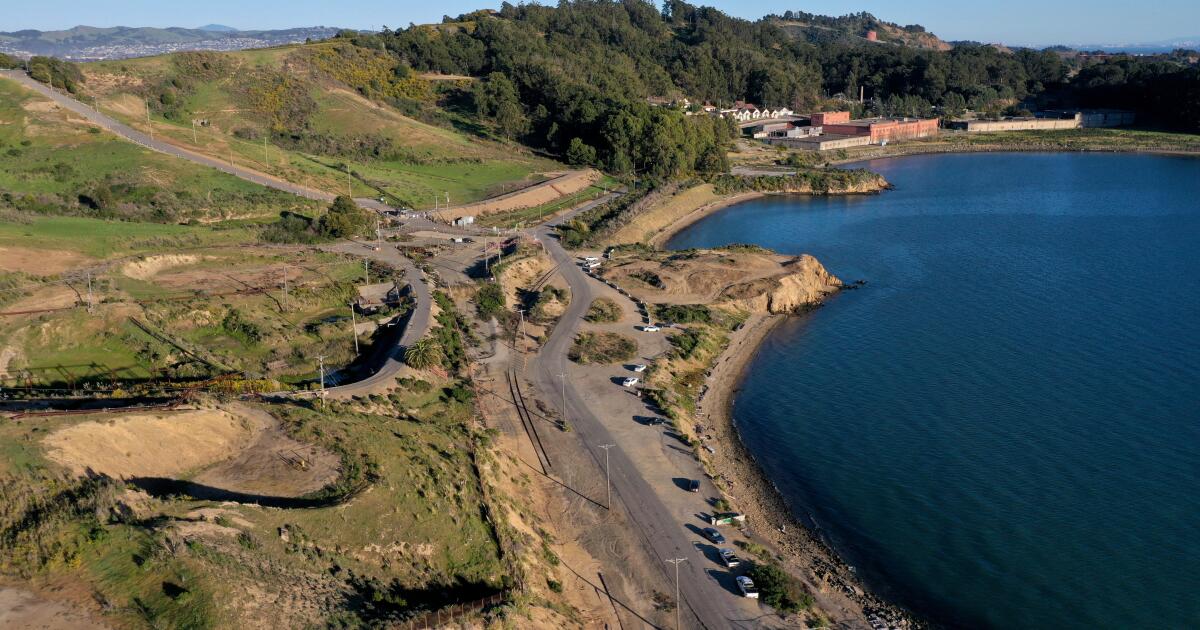Just up the road from Oakland and Berkeley, the city of Richmond is a minority and low-income community of 115,500 people — mainly Latino, Black and Asian American — with a major Chevron refinery whose pollution has been an ongoing source of conflict (the city just reached a $550-million settlement with Chevron to mitigate health and lifestyle effects of the refinery). It’s also home to an active port and soon — finally — a world-class park.
Point Molate exemplifies the struggle for environmental justice in under-parked and over-polluted minority communities. Political support in Sacramento and Washington helps, but the battle to guarantee the future of 413 acres of city-owned headlands relied on bottom-up organizing and determined citizen engagement that encompassed protests, local candidacies, ballot initiatives, neighborhood meetings, bilingual mailings, public testimony, photo and art exhibits, billboards, site tours and, of course, lawsuits. Democracy, in other words.
The headlands site, Point Molate, a former World War II Navy fuel depot largely reclaimed by nature since its closure in 1995, lies just north of the Richmond Bridge. It deserves its tagline: “The most beautiful part of the Bay Area no one’s ever heard of.” Yet it was almost lost to various development schemes until this summer, when the Richmond City Council voted to approve a $40-million deal to establish it as a fully protected park. The state will provide $36 million (in part through Gov. Gavin Newsom’s 30×30 initiative, which like national and global efforts aims to protect 30% of the state’s lands and waters by 2030), with the balance coming from the East Bay Regional Park District.
Richmond got possession of Point Molate from the Navy in 2003 for $1, and the city quickly began bargaining over development rights to the site. A sliver of beach opened to the public in 2014, and at the height of the COVID-19 pandemic, it was a magnet for local families. For more than two decades, Richmonders fought for the other 97% of the fenced-off site to become a public park.
Point Molate, originally Ohlone land, is home to sea hares, bat rays, leopard sharks and river otters in its offshore eelgrass beds, one of the last healthy nurseries for herring and Dungeness crab in the San Francisco Bay estuary. Its native grasses and forested hillsides host nesting ospreys and more than 200 other bird species, along with mule deer, wild turkeys, coyotes and the rare pipevine swallowtail butterfly. Before the Navy arrived, Point Molate was famed for Winehaven, a red-brick winery, worker housing and a shipping port constructed to keep California wine flowing after the 1906 earthquake destroyed much of San Francisco. Winehaven’s buildings are now on the National Register of Historic Places.
Developers, in collaboration with a band of Pomo Indians from Mendocino County, first proposed a mega-casino for the site, with 4,000 slot machines and Las Vegas-style amenities, including a convention center, a high-rise parking structure and a ferry. Despite the promise of thousands of jobs and significant annual revenues, Richmond residents feared that the project would generate crime, encourage problem gambling and create constant traffic jams. In 2010, the city’s voters rejected the casino proposal 58% to 42%.
With the casino defeated, another development plan emerged: a luxury housing estate — as many as 1,450 homes and condos with price tags in the $1.2-million range, for buyers with incomes around $250,000. The median income for Richmond’s residents is just under $80,000. The city would be required to build and staff a fire and police substation and float a $300-million bond to fund the development’s water, power and sewage infrastructure.
Once again, the community rallied. Housing advocates objected to the city’s making a hefty, ongoing investment at Point Molate; they wanted affordable, mixed-use units built downtown, where infrastructure is already in place and housing is desperately needed. Richmonders, environmental groups and others — including commercial fishermen — joined together in the Point Molate Alliance (full disclosure: I’m a member), which took the lead in the effort.
The coalition held community meetings, testified at City Council meetings and, with pro-bono legal help, filed a California Environmental Quality Act lawsuit arguing that the developer’s environmental impact report failed to account for the consequences of building on a sensitive site, with no provision for protecting Ohlone sacred sites and no evacuation plan for an area the state classified as a “High Fire Hazard Severity Zone.”
In June 2024, the California Court of Appeals unanimously sided with the community activists’ CEQA suit, ruling that the luxury housing EIR was fatally flawed and had to be rescinded, effectively canceling the city’s obligation to the developers.
Except for the claim of the Guidiville Rancheria Pomo, who had been part of the original casino plan. In July, the tribe and its developer partner agreed to the $40-million settlement offer from the city, state and park district.
“Point Molate Park Now!” T-shirts have gone from protest gear to collectibles. The last approval needed, from the California State Coastal Conservancy, is expected by November, when the East Bay Regional Park District can begin to take down miles of fencing and open the park to the public. Community members plan to work with the district to see soccer fields, hiking trails and a home for the annual Richmond Powwow established there in the near future.
When the people lead, the leaders follow. Stubborn, vigilant community activism won a tangible victory at Point Molate that can be repeated in other under-parked communities. Remember: River otters and herring can’t sign petitions. Butterflies can’t vote and mule deer can’t testify at City Council meetings. It’s up to us humans.
David Helvarg is a Richmond resident; executive director of Blue Frontier, an ocean policy group; and co-host of “Rising Tide: The Ocean Podcast.”

